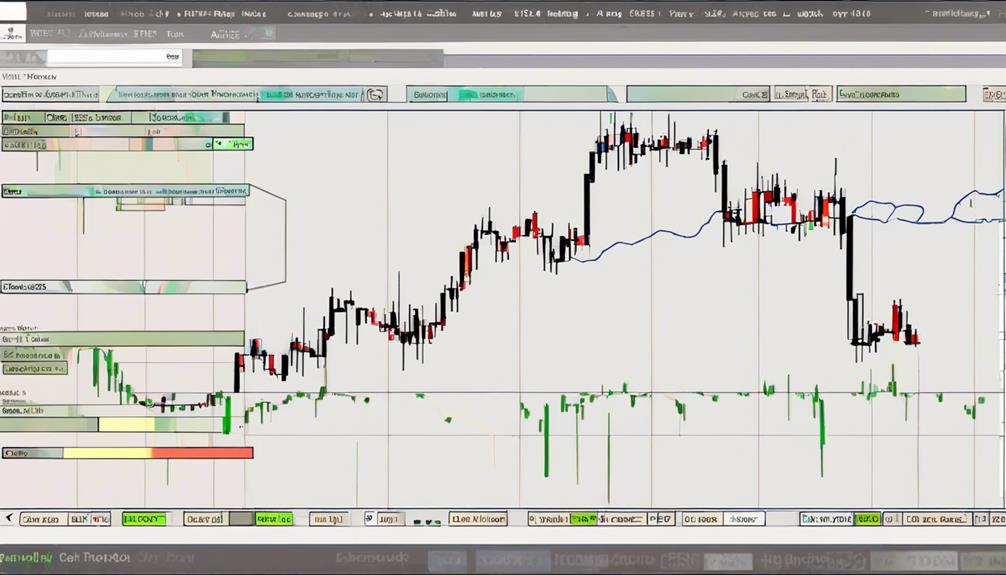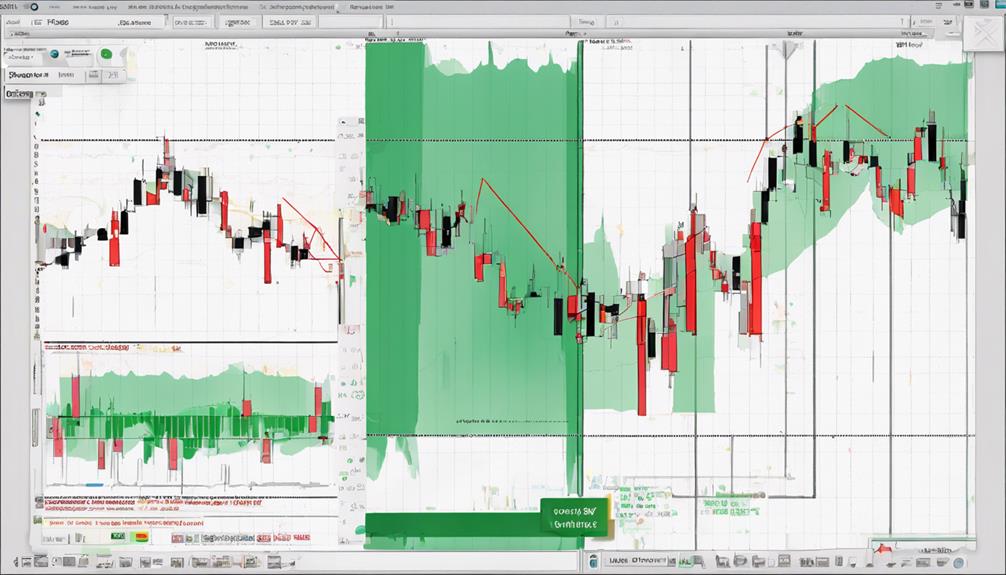Understanding the Williams %R indicator is crucial for traders seeking to gauge market momentum and potential reversals. By mastering its fundamental purpose and calculation, traders can gain insights into overbought and oversold conditions.
However, delving deeper into its interpretation and comparing it with related indicators like the Fast Stochastic Oscillator unveils a more comprehensive understanding.
These three key approaches provide a solid foundation for utilizing the Williams %R indicator effectively in navigating the complexities of the financial markets.
Williams %R Indicator Basics
The Williams %R indicator serves as a valuable tool for traders seeking to gauge the momentum and potential reversal points in the market. This indicator, similar to the Stochastic oscillator, measures the level of the close in relation to the highest high over a specified period, typically 14 days.
It oscillates between 0 and -100, with values above -20 signifying overbought conditions, suggesting that the price may be too high and a reversal could be imminent. On the other hand, readings between -80 and -100 indicate oversold conditions, implying that the price may be too low and a potential reversal to the upside could occur.
The formula for Williams %R is calculated as (Highest High – Close) / (Highest High – Lowest Low), providing traders with a clear indication of the current momentum and the relative position of the price within the given timeframe.
Interpreting Williams %R Readings

Building upon the foundational understanding of Williams %R Indicator basics, interpreting Williams %R readings involves analyzing the oscillations between 0 and -100 to determine potential overbought and oversold conditions in the market.
- Williams %R readings provide insight into overbought or oversold conditions by ranging from 0 to -100. Values above -20 indicate overbought readings, while values below -80 suggest oversold conditions based on recent price movements.
- Crossing above -50 in the Williams %R indicator implies a bullish trend, signaling potential buying opportunities. Conversely, crossing below -50 indicates a bearish trend, suggesting potential selling opportunities in the market.
- By utilizing Williams %R in conjunction with other technical indicators, traders can seek confirmation of signals and enhance the accuracy of identifying trend reversals or continuations in the market. This combined analysis can help traders make informed decisions and improve the overall effectiveness of their trading strategies.
Practical Application of Williams %R

Utilizing Williams %R in conjunction with other technical indicators enhances traders' ability to identify market trends and make informed trading decisions. When combined with indicators like the Fast Stochastic Oscillator, Williams %R can provide a comprehensive view of overbought and oversold conditions, acting as a momentum indicator within trading strategies.
Traders can use Williams %R to determine entry and exit levels, particularly in relation to price action analysis. Readings above -20 may suggest bullish trends, signaling potential buying opportunities, while values below -80 could indicate bearish trends, prompting considerations for selling positions.
What Are the Key Principles for Understanding and Using the Williams %R Indicator?
When it comes to understanding and using the Williams %R indicator, there are a few key principles to keep in mind. First, it’s important to understand that this indicator measures overbought and oversold levels. Secondly, it’s crucial to use it in conjunction with other technical analysis tools for optimal use of the indicator.
Frequently Asked Questions
How Do You Read a Williams R Indicator?
To interpret the Williams %R indicator, observe overbought and oversold levels, bullish and bearish trend signals, and momentum weakening indications. Confirm signals with other tools for effective trading decisions. Precision in analyzing market conditions is crucial.
What Is the Best Setting for the Williams %R Indicator?
Selecting the optimal setting for the Williams %R indicator involves balancing sensitivity and reliability. Traders often find a 14-day period suitable as a default, but customization based on trading goals and risk tolerance can enhance effectiveness.
Is Williams %R Leading or Lagging?
Williams %R is a leading indicator, not lagging. By forecasting potential price reversals ahead of time, it empowers traders to anticipate market shifts. Its proactive nature aids in making timely decisions and gaining a competitive edge.
Is the Williams Indicator Good?
The Williams %R indicator is a useful tool for identifying overbought and oversold market conditions, aiding in trend reversal detection and entry/exit points. When used alongside other indicators, it can enhance decision-making in technical analysis.
Conclusion
In conclusion, mastering the Williams %R indicator involves understanding its purpose, formula, and comparison with similar indicators.
By delving into its basics, interpreting its readings, and applying it practically, traders can navigate market trends more effectively.
Embracing the nuances of this indicator can lead to informed decision-making and potentially enhance trading strategies.
